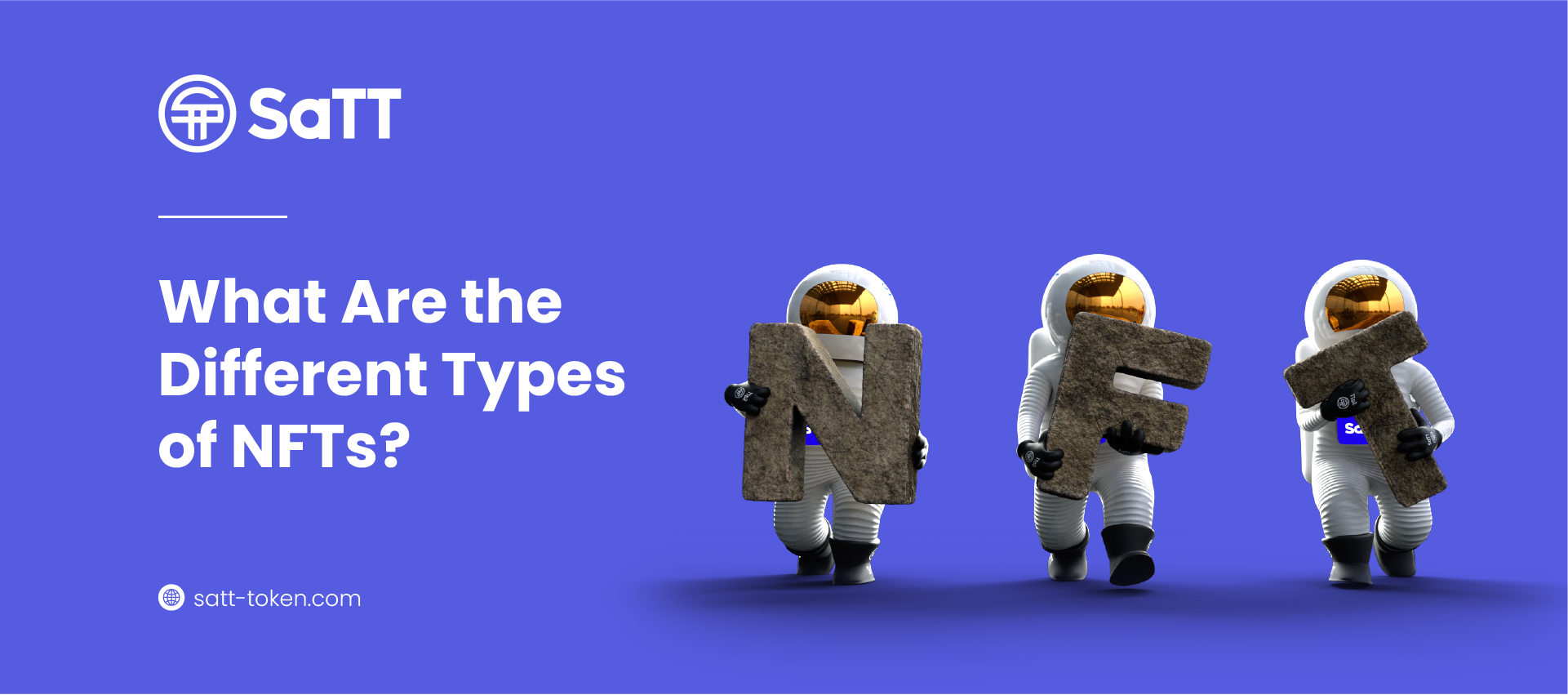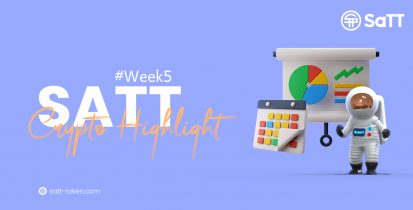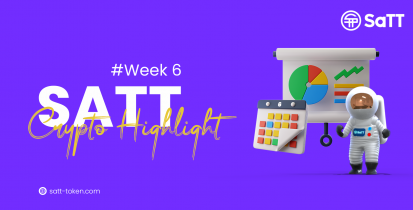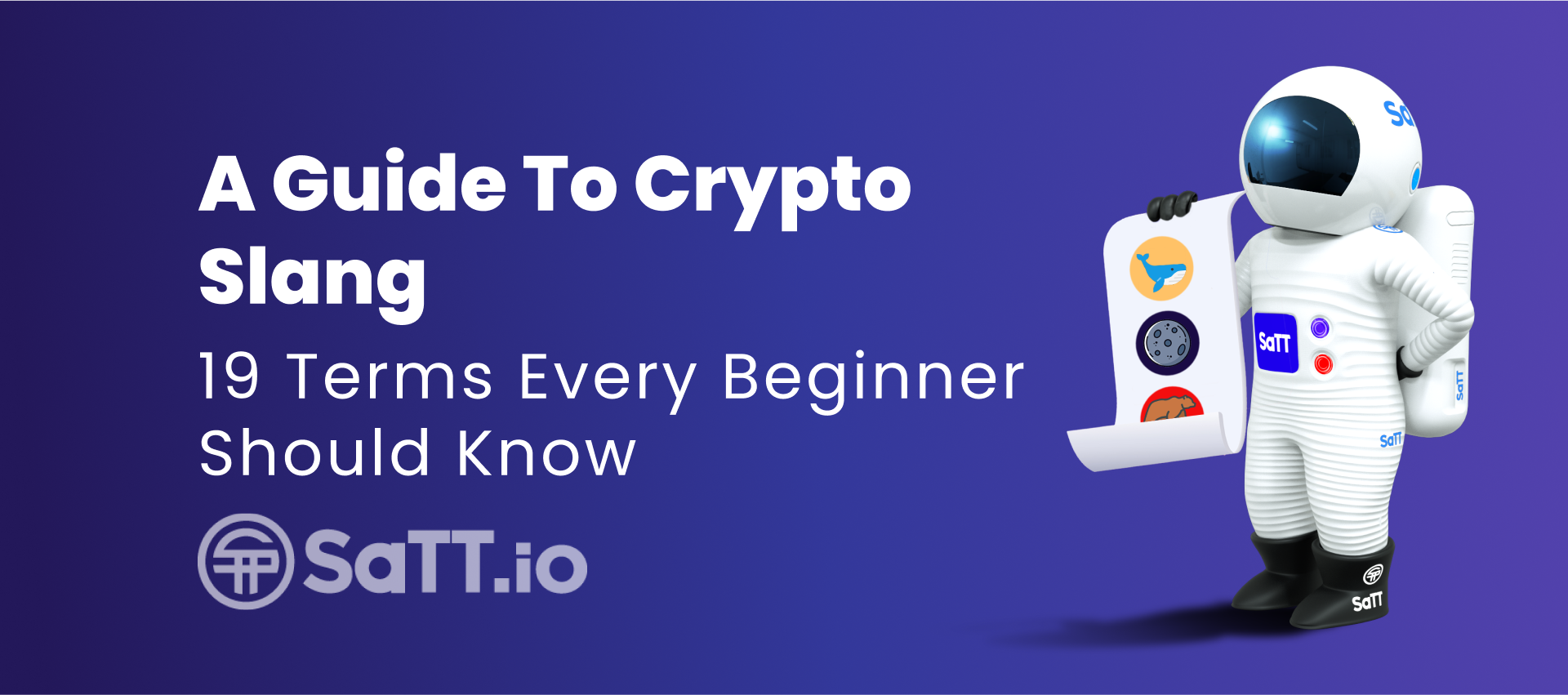
What Are the Different Types of NFTs?
Non-fungible tokens (NFTs) dominated the crypto news in 2021. Based on blockchain technology, NFTs are driving cryptocurrency adoption to the next level with some groundbreaking sales and purchases taking place within the crypto space. Marketplace for NFTs reached a value of $41 billion in 2021, according to blockchain data company Chainalysis latest report. But what types of NFTs exist in the market today? In this article, we take you through types of non-fungible tokens that you can create or purchase to venture into the world of NFTs.
Non-fungible tokens (NFTs) topics became a hit in 2021 following a series of groundbreaking sales and purchases. For example, Jack Dorsey, the Billionaire co-founder of Twitter, shocked the world when he put up his first-ever tweet, “Just setting up my twttr” for sale. The highly-publicized auction was conducted on Cent-attracting several bids. The tweet was eventually sold for $2.9 billion as an NFT, and Mr. Dorsey donated the proceeds to charity. More recently, Krista Kim sold the first digital home, Mars House, as a non-fungible token (NFT) for more than $500,000. Just to mention but a few. As 2022 picks up, the NFT market appears to be staying strong. NFTs sales hit half a billion dollars in the first week of 2022 alone, according to a report from NonFungible.com.
NFTs can represent anything that is indivisible and combining this feature with blockchain’s immutability feature, it becomes a perfect fit that can represent limited or sole ownership of items such as artwork, music, gift cards, event tickets, and more.
While many blockchains now offer NFTs with different characteristics, Ethereum was the first blockchain to come up with smart contracts that would enable issuing of NFTs. As the largest blockchain with smart contracts, Ethereum hosted the first-ever NFT, CryptoKitties. Other than Ethereum, other blockchains that offer NFTs include Bitcoin Cash, Cardano, Solana, Tezos, Flow, and GoChain among others.
Table of Contents
The different types of NFTs
Social Tokens
Social tokens are a type of NFTs that allows influencers, brands, or communities to monetize themselves beyond the typical means by allowing fans to own a ‘piece’ of them. This has opened doors for celebrities, influencers, and businesses to use social media or other popular media streams to monetize their skills or services. In this arrangement, if they use platforms such as Facebook or Instagram, they can earn from the shared revenue even as they exert artistic control on their content at the same time. Social tokens give power to the content creators, hence the latter can eliminate the barriers and bring forward a new principle of ownership in the digital economy.
There are two types of social tokens: personal (or creator) tokens and community tokens. The two types of social tokens share the features of being decentralized and secure-drawn from the immutable blockchain technology.
Personal tokens, sometimes called creator tokens, are created by individuals to exchange forms of labor. The individuals, mostly celebrity entrepreneurs, and artists create these personal tokens to use as a mode of payment in exchange for labor or services provided to them. Community tokens, on the other hand, are created to give creators access to a particular community. These tokens can be likened to membership cards, but in the digital realm, thanks to blockchain technology.
Several companies have emerged over the last couple of years to leverage the power of social tokens, led by Veracity, Rally, and Hive. Veracity is a digital rights management company looking to create new experiences with eSport and AdTech. Rally is a community NFTs platform enabling individuals to create their unique digital assets to enable them to interact with members of the community. Hive is an NFT marketplace that allows members to create and buy NFTs.
NFT Pass
These types of NFTs carry the property of a ticket or a pass to an event. NFTs being blockchain-enabled fit well for event ticketing. For example, Seat 5 in row 2 on Sunday afternoon at the SSE Arena, Wembley is available only once. It means that no other ticket can be given bearing these identities at the same time once purchased, making NFT pass perfect for creating events tickets.
NFT Pass ensures there is only one owner of a ticket at the same time. Any other ticket bearing exact similar features are considered fake. Similarly, if you pass the ticket to a third party, you lose ownership rights to that specific event. In other words, you transfer the rights to ticket usage to another person.
These types of NFTs make it easy to integrate payment options to ease buying and selling of tickets. The integrated payment option ensures a ticket is paid for before it’s handed over to the buyer, which makes it impossible to cheat the system. The tickets also have in-built intelligence, making it easy to track the ticket sales. The revenue generated flows back to the organizer. Additionally, transfer to another owner can be made impossible altogether to avoid problems associated with event ticketings such as usury on the secondary market or the presence of hooligans at the soccer match. One such example is Metakey, a token that can be used across multiple platforms to transform into avatars, game items, exclusive game perks, course material, virtual land access, activate discounts, and many more.
NFT collection
Just as the name suggests, the NFT collection is a collection of NFTs types with a unique digital identifier. An owner of an NFT collection can grant exclusive access to special items in the collection. For example, a couple recently reported selling an NFT collection of 10,000 cartoon ducks in less than six hours, earning them $120,000. The sale saved the couple’s home from foreclosure. Some other well-known collections like CryptoPunks and CyberKongz have also sold out hours after launch.
CryptoPunks was a highly popular NFT collection that did not attract much attention at launch until 10,000 of them sold out in 24 hours. The Ethereum-based NFT collection was launched in June 2017 by Larva Labs Studio after the founders got inspiration from the London punk scenes, the cyberpunk movement, and electronic music artist Daft Punk.
CyberKongz is also another Ethereum-based NFT collection with unique and randomly generated 2D/3D NFT Social Avatars for your online experiences. It can also be defined as a gamified collectible Dapp, where you can collect CyberKongz, the ape-like humanoids. Each CyberKong comes in the form of an NFT, and can also contain different items, all ranging in rarity.
Physical Art NFTs
Physical art NFTs are those digital collectibles linked to physical art, which helps creators prove ownership of physical artwork. Connecting the physical world makes it impossible to pirate the artwork because the owner will also have the digital version to prove ownership. This gives creators more control over their assets and a greater potential for increasing revenue. Additionally, creators or collectors can fractionalize the art pieces to allow people to own them in ‘pieces’.
By linking physical art with NFTs, creative can leverage the blockchain’s smart contracts, making physical arts more accessible for the global community. This replaces the traditional route of setting up an art gallery, lowering the costs of selling art and increasing revenue. Maecenas is an example of such a platform. It is an online platform where you can purchase famous art pieces infractions. The fractional ownership allows part-owners to enjoy the profit if the NFT increases in value and gets sold to another holder.
Digital Art NFTs
Digital art NFTs are the digital assets that exist completely in digital space. You can’t find them in physical form, although you can still own them in the digital realm. This type of NFT was probably the first and the most known type of NFT.
Before the emergence of cryptocurrencies and blockchain, we never really got to won anything that was completely digital. People shared videos, graffiti, or pictures freely, in many cases repurposing and reposting them. However, there wasn’t this current system that automatically hands you the opportunity to take full, legitimate ownership over a digital file or artwork. Digital art NFTs have changed the way creators share their digital artworks, either through renting, selling, or displaying to the community of fans.
A digital art NFT is created by a designer by creating legal ownership through a process known as minting or tokenization on a blockchain network. The process allows digital artists or creators to gain formal recognition for their work.
Rarible, an Ethereum-based NFT platform, is one good example of a platform that facilitates the creation, sale, and purchase of ownership rights to digital works of art via NFTs. Another popular NFT marketplace where you can sell your digital art or buy one is Foundation, a platform that aims to build a new creative economy where creators use Ethereum blockchain to create value on their artwork. The platform enables creators to build stronger networks and connections with their supporters, hence promoting the digital art NFTs trade.
Digital Goods NFTs
The fashion industry has not been left behind in the NFT craze. Digital goods NFTs are transforming the fashion industry in the digital era as brands use NFTs and blockchain technology to attract, verify and connect with consumers from all over the world. Digital clothes can be used for video games with virtual metaverse-like worlds. For example, the RTFKT, which was established in 2019, specialized in the selling of virtual sneakers. The brand collaborated with FEWOcious, a popular crypto artist who designed virtual sneakers for sale in the auction market. The iconic Italian fashion house, Gucci, also became the first major luxury fashion company to sell fashion NFTs.
Land (Tokenized Properties)
Real estate/land tokenization has made it possible to convert properties such as land and real estate assets into tokens on the blockchain to allow fractional ownership through sales. The tokens represent an interest in real estate or property, which can be used to raise capital for developing it. In other words, tokenization of a property is one way to securitize real assets. It means dividing the land into shares that you can sell to investors, and the tokens represent a predefined share of the underlying piece of land and many other assets. The tokens are secured through blockchain technology, which makes them tradeable via crypto exchanges or Alternative Trading Systems (ATS).
As the owners of a piece of land, you may decide to tokenize it by issuing Ethereum-standard ERC20 tokens (security tokens) to represent the shares of the property. In this arrangement, the total value of all tokens will be equivalent to the total value of a securitized asset.
Land tokenization is hailed for its ability to help property owners raise funds faster to develop the property. One such example is Sandbox, an ecosystem that allows landowners to tokenize their property. Powered by its utility token, SAND, Sandbox allows people to digitize their land and allow part ownership. Decentraland is another NFTs marketplace where people can buy and sell NFTs that can be used within the metaverse.
NFTs for Identification
NFTs have set a new standard for cybersecurity and identity management through a decentralized platform for the safe storage of data, thus protecting various organizations from cyber assaults. These security features enable the tracking of people’s identities, which can be used to maintain data for individual identification through public or private blockchain. Because a public blockchain is accessible to anyone on the internet, they are safe and tamper-proof. Therefore, a blockchain-based platform is the best place to store identification data. A good example is LUKSO, a blockchain infrastructure that provides a series of standards and solutions for physical and digital consumer goods. The goal is to foster transparency, circularity, and new forms of responsible production and consumption.
Blockchain and NFTs have become the most popular technology combination in the recent past. Blockchain gives NFTs a new level of security and identification, which has propelled the latter to a whole new level of adoption. The world is becoming more digital, and a technology that can help keep data private like blockchain is indispensable. NFTs form the best tool for entities to add value to digital works.
NFTs have ensured owners of digital assets can keep up with all the transactions. More importantly, it has opened up a new way for digital asset owners to earn extra money and prevent any piracy as the digital trail can be followed up to the original creator or collector. As such, several projects have employed NFTs to represent tokens to their networks, and it’s upon a user to decide which NFT type suits their needs.





